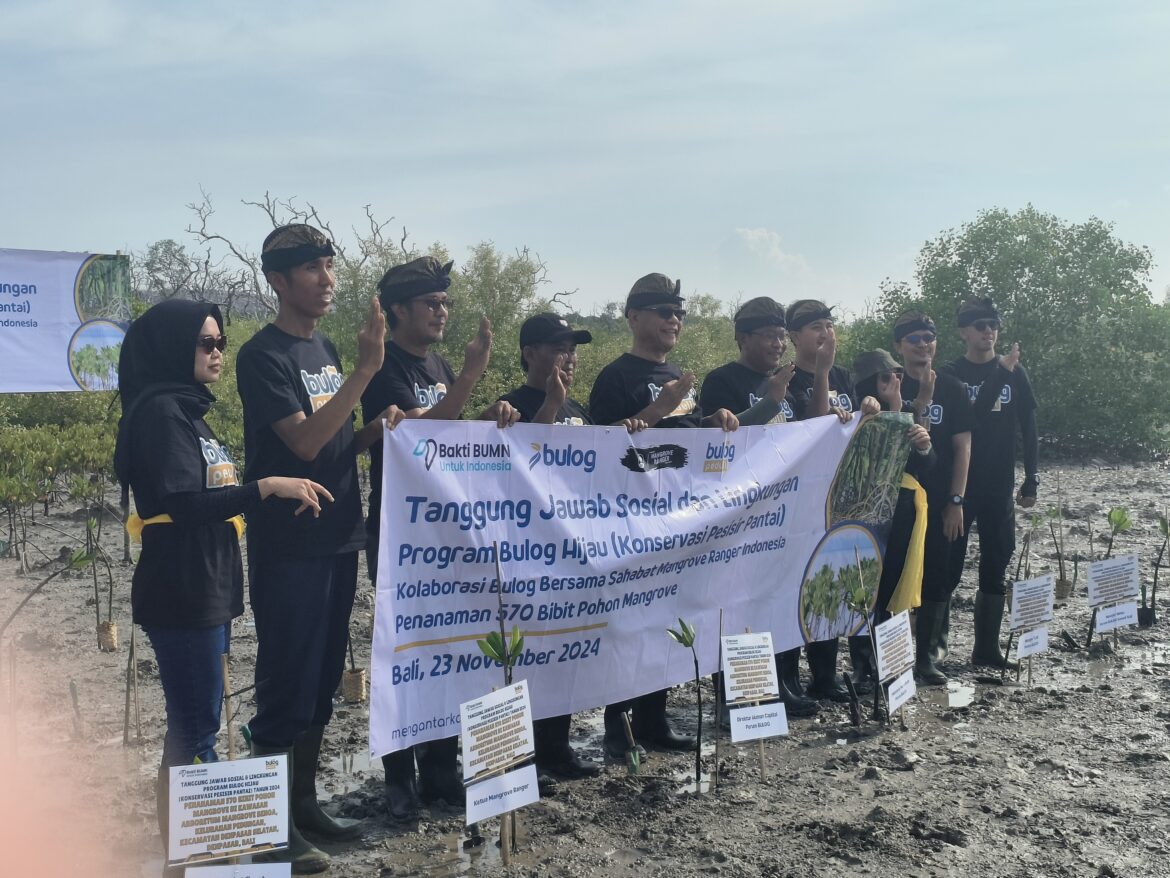BALI, ULTIMOPARADISO.COM – The Indonesian Bureau of Logistics (Perum Bulog), in collaboration with the Mangrove Ranger Indonesia community, planted 570 mangrove saplings at the Benoa Mangrove Arboretum in Pedungan on Saturday (23/11/2024). This initiative reflects Bulog’s commitment to environmental sustainability through its Social and Environmental Responsibility (TJSL) program.
“This is part of the Bulog Hijau TJSL Program. By working with Mangrove Ranger Indonesia, we aim to conserve Bali’s mangrove ecosystem. Through this initiative, Bulog Peduli Lingkungan, we hope to benefit society and future generations,” stated Sudarsono Hardjosoekarto, Perum Bulog’s Director of Human Capital, after planting the mangrove saplings at the arboretum.
According to Sudarsono, the mangrove saplings, of the Rhizophora mucronata species or black mangrove, were planted as part of coastal conservation efforts aligned with environmental development pillars and Sustainable Development Goal (SDG) 14, which focuses on protecting marine ecosystems. The number of saplings planted, 570, symbolized Bulog’s 57th anniversary.
“Indonesia is home to vast coastal areas with traditional mangroves. We hope the community, local governments, state-owned enterprises, and the private sector can work together to conserve nature through planting initiatives. This is crucial given the impacts of climate change,” Sudarsono added.
Meanwhile, Siti Rosida, Field Coordinator for Mangrove Ranger Indonesia, explained that the planting utilized a clustered square planting system, with each square containing 150 saplings. Over the next three years, the organization will implement a “replanting” system, replacing mangroves that fail to survive.
“The challenges are immense. The current extreme weather conditions have led to a mortality rate of almost 30% over the past year. However, we remain optimistic, supported by our square system, which is an environmental engineering effort,” said Rosi at the site.
Rosi also noted that soil nutrients at the site had depleted, prompting the team to provide additional nutrients for each cluster to sustain plant growth. Additional challenges include tidal conditions and waste pollutants, which affect mangrove survival.***Sandra G


